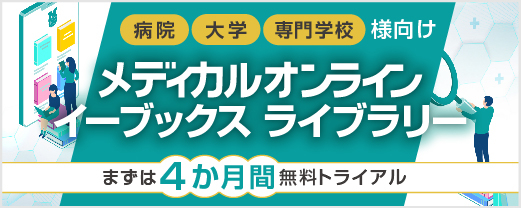アブストラクト
| Title | 脳卒中超急性期リハビリテーション治療における運動麻痺へのアプローチ |
|---|---|
| Subtitle | 特集 脳卒中運動麻痺へのアプローチ |
| Authors | 幸田剣1,2), 寺村健三2), 木下利喜生2) |
| Authors (kana) | |
| Organization | 1)和歌山県立医科大学 リハビリテーション医学講座, 2)和歌山県立医科大学附属病院 リハビリテーション部 |
| Journal | JOURNAL OF CLINICAL REHABILITATION |
| Volume | 30 |
| Number | 6 |
| Page | 572-579 |
| Year/Month | 2021 / 6 |
| Article | 報告 |
| Publisher | 医歯薬出版 |
| Abstract | 「内容のポイントQ&A」 (Q1)超急性期リハビリテーション治療とは? 脳卒中超急性期のリハビリテーション治療は, エビデンスが集積しつつあり, 重要であることは明白であるが, ただ行えばよいのではなく, その質が問題である. 質とは訓練の内容のことで, 2つに集約するとすれば, 起立と運動である. まずリハビリテーション科医師が正確な診断と患者の状態を評価したうえで, リハビリテーション処方を行う. その診断に基づいて, 熟練した療法士がリハビリテーション治療を施行する. (Q2)超急性期リハビリテーション治療は運動麻痺を改善させるか? 中枢神経再生, 機能再建のために, 麻痺部の運動機能の維持・向上と, 神経軸索の成長を促すことが超急性期リハビリテーション治療の目的となる. リハビリテーション治療に欠かせないのが運動療法であり, 現時点ではエビデンスは得られていないが, 理学療法で行う長下肢装具を使用した歩行訓練や, 上肢機能向上を目的として行う作業療法が, 麻痺部の運動機能の維持・向上や神経軸索の成長につながると考えられる. (Q3)超急性期リハビリテーション治療の実際は? 超急性期から抗重力負荷と運動負荷を継続することにより, 不動に伴う合併症を防ぐことができ, 長期的な効果としてリハビリテーション治療の基本である活動性の向上が得られる. このコンセプトは理学療法でも作業療法でも同様である. 理学療法では, 症状の進行や全身状態の悪化がない限り, 立位・歩行訓練を積極的に行うため, 装具療法が不可欠である. 作業療法でも積極的に座位や立位で上肢機能向上の訓練を行う. (Q4)超急性期リハビリテーション治療の今後の展望は? 近年, 脳卒中に対しても再生医療が期待されているが, 中枢神経再生と同時に機能を発揮するためには, 今よりもさらに積極的に麻痺部の運動機能を維持, あるいは可能な限り強化しておく必要がある. したがって, 超急性期からのリハビリテーション治療の果たす役割は大きく, 従来通りの抗重力負荷と運動負荷に加えて, 麻痺部の骨格筋に対する機能的電気刺激も超急性期から取り入れることが有用となる可能性がある. |
| Practice | 臨床医学:外科系 |
| Keywords | 超急性期リハビリテーション治療, 運動麻痺, 早期離床, 長下肢装具, 運動負荷 |
- 全文ダウンロード: 従量制、基本料金制の方共に1,243円(税込) です。
参考文献
- 1) 日本脳卒中学会脳卒中ガイドライン委員会 : 脳卒中治療ガイドライン2015[追補2019], 協和企画, 2019, pp277-278.
- 2) Indredavik B et al : Stroke unit treatment. 10-year fol-low-up. Stroke 30 : 917-923, 1999.
- 3) Cumming TB et al : Very early mobilization after stroke fast-tracks return to walking : further results from the phase II AVERT randomized controlled trial. Stroke 42(1) : 153-158, 2011.
- 4) AVERT Trial Collaboration group et al : Efficacy and safety of very early mobilisation within 24 h of stroke onset(AVERT) : a randomised controlled trial. Lancet 386 : 46-55, 2015.
- 5) 日本リハビリテーション医学教育推進機構・日本急性期リハビリテーション医学会・日本リハビリテーション医学会監修 : 急性期のリハビリテーション診断. 急性期のリハビリテーション医学・医療テキスト, 金芳堂, 2020, pp58-62.
残りの8件を表示する
- 6) Kinoshita T et al : Effects of physiatrist and registered thera-pist operating acute rehabilitation(PROr)in patients with stroke. PLoS ONE 12 : e0187099, 2017.
- 7) Kinoshita T et al : Mobilization within 24 hours of new-onset stroke enhances the rate of home discharge at 6-months follow-up : a prospective cohort study. Int J Neurosci 22 : 1-10. doi : 10.1080/00207454.2020.1774578. Online ahead of print. 2020.
- 8) 中澤公孝, 赤居正美 : ヒト脊髄歩行パターン発生器と脊髄損傷者の歩行. リハ医 40 : 68-75, 2003.
- 9) Spaak J : Impaired pressor response after spaceflight and bed rest : evidence for cardiovascular dysfunction. Eur J Appl Physiol 85 : 49-55, 2001.
- 10) Moriki T et al : Sitting position improves consciousness level in patients with cerebral disorders. Open J Therapy Rehabil-it 1 : 1-3, 2013.
- 11) Sakamoto K et al : Immediate effects of unaffected arm ex-ercise in poststroke patients with spastic upper limb hemi-paresis. Cerebrovasc Dis 37 : 123-127, 2014.
- 12) Cotman CW et al : Exercise : a behavioral intervention to enhance brain health and plasticity. Trends Neurosci 25(6) : 295-301, 2002.
- 13) Goekint M et al : Influence of citalopram and environmental temperature on exercise-induced changes in BDNF. Neuro-sci Lett 494(2) : 150-154, 2011.


